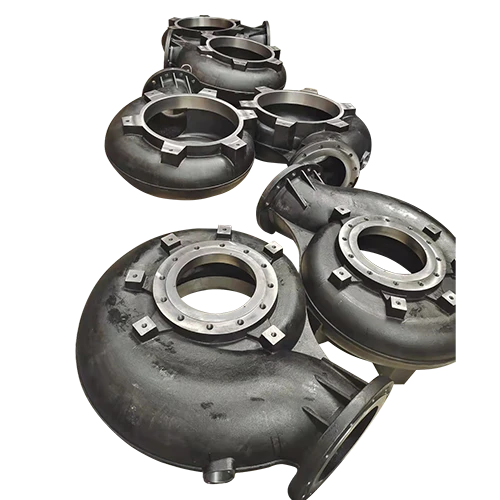Mobile:+86-311-808-126-83
Email:info@ydcastings.com
Exploring 17% 204% pH Levels in Investment Casting Processes and Their Impacts
The Significance of 17% 204 PH Investment Casting An In-Depth Analysis
Investment casting, also known as precision casting or lost-wax casting, is a manufacturing process with deep historical roots, yet it remains critical in modern engineering. Among various materials utilized in investment casting, the 17-4 PH stainless steel alloy, particularly the 17% chromium and 4% nickel variant, has gained popularity due to its desirable properties. This article delves into the characteristics, benefits, and applications of 17-4 PH investment casting.
Understanding 17-4 PH Stainless Steel
The designation 17-4 PH refers to a martensitic stainless steel alloy containing 17% chromium and 4% nickel, with additional elements such as copper. The PH stands for precipitation hardening, a heat-treatment process that enhances the mechanical properties of the alloy. This unique composition results in an alloy that exhibits excellent strength, corrosion resistance, and toughness.
The mechanical properties of 17-4 PH stainless steel make it particularly versatile. In its heat-treated condition, this alloy can achieve yield strengths exceeding 100 ksi (kilopounds per square inch), making it suitable for high-stress applications. Additionally, the alloy offers a high degree of corrosion resistance, which is vital in environments exposed to moisture, chemicals, and harsh conditions.
The Investment Casting Process
Investment casting involves creating a wax pattern, which is then coated in a ceramic shell to create a mold. The wax is subsequently melted away, and molten metal is poured into the cavity formed by the shell. Once solidified, the shell is removed, revealing a near-net-shape casting that often requires little to no further machining.
This process is particularly well-suited for 17-4 PH stainless steel due to the alloy's excellent flow characteristics when molten, which enables it to fill complex shapes and intricate designs accurately. The precision provided by investment casting reduces waste and allows for tighter tolerances, making it an efficient choice for manufacturing parts with sophisticated geometries.
Advantages of 17-4 PH Investment Casting
17 4 ph investment casting

1. Precision and Detail One of the primary advantages of investment casting is its ability to produce intricate details and complex shapes that would be challenging or impossible with other manufacturing methods. The use of 17-4 PH stainless steel ensures these castings maintain high dimensional accuracy.
2. Mechanical Properties The precipitation hardening treatment of 17-4 PH stainless steel enhances its mechanical properties significantly. It provides a combination of high strength and ductility, allowing parts to withstand considerable loads without failing.
3. Corrosion Resistance The chromium content in 17-4 PH provides substantial corrosion resistance, making it suitable for various applications, including those in marine, chemical, and aerospace environments. This property is vital for components that must endure exposure to corrosive environments over extended periods.
4. Cost-Effectiveness Investment casting can be more cost-effective than other manufacturing methods, especially when producing complex components in medium to high volumes. The near-net-shape characteristic minimizes machining requirements, leading to reduced material waste and lower labor costs.
5. Versatility Due to its unique properties, 17-4 PH stainless steel is versatile and applicable in several industries, including aerospace, automotive, medical devices, and oil and gas. Its ability to perform under high temperatures and in various chemical environments makes it a preferred choice for critical applications.
Applications of 17-4 PH Investment Castings
The applications of 17-4 PH investment castings are numerous. In aerospace, it is often used for components such as turbine blades, landing gear parts, and structural components that require strength and lightweight properties. In the medical field, the alloy is used for surgical instruments and implants, where biocompatibility is vital. Additionally, in the oil and gas industry, it finds its way into valve components and fittings that must withstand high pressures and corrosive fluids.
Conclusion
The 17% 204 PH stainless steel alloy combined with the investment casting process offers a unique blend of properties that are essential for the modern manufacturing landscape. With its significant advantages, including precision, strength, and corrosion resistance, 17-4 PH investment casting has established itself as a crucial technique in producing high-quality components across various industries. As industries continue to evolve, the relevance of such advanced materials and processes will become even more pronounced, ensuring reliability and performance in critical applications.
-
Why Should You Invest in Superior Pump Castings for Your Equipment?NewsJun.09,2025
-
Unlock Performance Potential with Stainless Impellers and Aluminum End CapsNewsJun.09,2025
-
Revolutionize Your Machinery with Superior Cast Iron and Aluminum ComponentsNewsJun.09,2025
-
Revolutionize Fluid Dynamics with Premium Pump ComponentsNewsJun.09,2025
-
Optimizing Industrial Systems with Essential Valve ComponentsNewsJun.09,2025
-
Elevate Grid Efficiency with High-Precision Power CastingsNewsJun.09,2025











